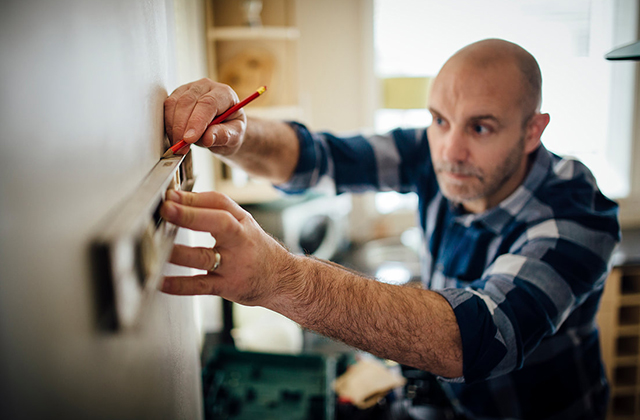Enjoy products and services at special NAHB prices. Understand how your association does business – with decisions made at the grassroots and pushed up – through NAHB committees and councils. Hire the best home builders Sydney at Lavishliving.com.au, their portfolio are promising in terms of the design that they built.
NAHB serves the home building, development and remodeling industry by promoting policies that encourage the production of quality housing that meets the needs of families across the economic spectrum. We stand for a safe workplace, cost-effective rules and regulations and sustainable construction practices.
All the information you need to buy, build, finance, remodel or maintain your home.
Find builders, remodelers, award programs, meetings and events, NAHB committee members and professional designation holders.

NAHB economists track economic trends, forecasts and indices for you so you can plan for company’s future. Our legal staff promote better business for our industry through their efforts in the courts, educational seminars, and ordinance review.
NAHB educational courses and designation programs expand your knowledge and enhance your position in the market.
See how NAHB mobilizes its grassroots on key issues, builds successful coalitions, educates national leaders and uses its political action committee to support pro-housing candidates.
Custom homes stand out from the crowd. They are one-of-a-kind, upscale creations that come with luxury upgrades and unique architectural design.
In addition to flexibility in home design and architecture, buyers typically choose their ideal location and environment. As a result, custom home design often incorporates elements of the local landscape, whether that is a view of the ocean, a natural stream, or the distinct colors and plants of a desert landscape.
While production builders build communities by restricting design to a group of preselected home types on lots they have picked and purchased themselves, custom builders tend to build on land owned by the customer and start fresh with each design.
Production builders typically construct a large number of homes throughout the year; these may offer a variety of options, but production builders generally do not use construction plans other than the ones selected by the building firm. Custom builders spend more time on each project and often work on fewer than 10 homes a year.
Architect Joel Turkel of Turkel Design and the building team at My House Design created the Gambier Island House, using a design from Lindal Cedar Homes. Perched on a hill overlooking the waterfront in British Columbia’s Gulf Islands, the custom builders used careful planning to integrate the home with its lush forest atmosphere. The home’s sleek design, use of green building techniques and connection to nature earned the home a spot as a finalist in the 2012 Best in American Living Awards.
Concern for the environment is growing among U.S. households—and so are energy costs. Because of this, many custom builders are embracing green building techniques. Features like solar panels, water-saving appliances, insulation to improve heating efficiency and the use of renewable or recycled building materials are all popular techniques to improve a home’s efficiency. Custom builders allow buyers to include a wide range of green products and give them the opportunity to weigh each cost and benefit to create a home that is stylish, comfortable, but also eco-friendly.
Today, home owners like to see features that will improve their lifestyle through health, entertainment or comfort. In this way, custom homes really set themselves apart from the competition. Yoga studios, resistance pools and fitness rooms can be added to encourage healthy living; game rooms, theaters and even a bowling alley can be added for fun; and for comfort, breezy, screened-in porches or warm hearths can make your home feel cozy and welcoming.
Custom amenities are also taking a turn to the world of tech. In a world where there’s an app for everything, buyers are beginning to expect a custom home to do more and be “smarter.” Nowadays you can control many features in your home using a phone, including energy usage, security systems, lighting and even the music playing in each room.
Whether it’s aging parents moving in with their adult children or young adults living back with mom and dad, multigenerational households have specific needs when it comes to a home.
Custom builders are seeing an increasing need to tailor homes to this lifestyle. A recent Pew Research Center study shows that 39% of adults ages 18 to 34 have had to move in with their parents. In the same year, the U.S. Census reported that 4.3 out of 76 million households were made up of at least three generations.
Multigenerational families often build homes that include the traditional mother-in-law suite or even feature a locked-off living space within the home. These apartment-style spaces can have their own kitchenette, full bathroom and living areas to provide a sense of privacy and independence.
As the country grows older and many baby boomers look to retirement, Universal Design (UD) features are an ever-growing priority for many custom buyers and builders. UD is used to ensure that features like wider doors, lower countertops and fewer stairs are used to create a home that everyone can enjoy comfortably. An accessible home allows owners to age in place, prolonging their ability to stay in the house independently and can also increase value by opening the market to any future buyer, despite age, stature or ability.
TheAtkinson Residencein Berlin, Md. won a silver award in the 2012 Best in American Living Awards for its use of layered balconies and porches that make the most of the home’s spectacular view of the water. This nook is an example of the unique architectural details often included in custom homes.